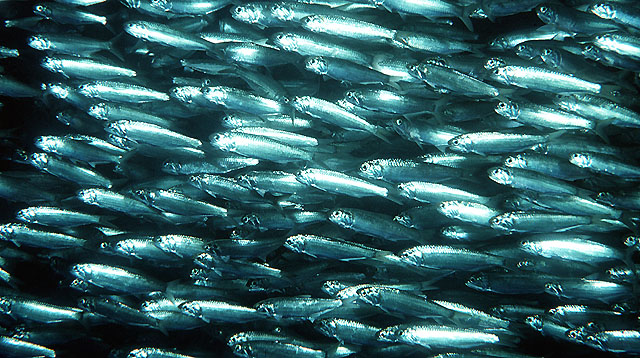| Engraulidae (Anchovies), subfamily: Coiliinae |
| 16 cm SL (male/unsexed) |
|
pelagic-neritic; brackish; marine; depth range 0 - 50 m |
| Indo-Pacific: widespread in Indian Ocean, including Red Sea, coasts of East Africa to Madagascar and Mauritius, Sri Lanka and Andaman Islands, but no Indian specimens known (Ref. 189); and in western central Pacific, including Indonesia, the Philippines, Papua New Guinea, northern and eastern coasts of Australia, and eastward to Tonga (Ref. 189). No records are known from South China Sea or to the north, but the Ogasawara, Bonin Islands, record seems reliable (Ref. 189). Its occurrence in Thailand (Ref. 1632) needs confirmation. |
|
Dorsal spines (total): 0-0; Dorsal soft rays (total): 14-16; Anal spines: 0-0; Anal soft rays: 29-34. Diagnosis: Body not strongly compressed, belly rounded before pelvic fins, with 4-9 pre-pelvic and 7-10 post-pelvic scutes, the pre-pelvic scutes ending below the pectoral fin base or behind it; in total 12-18 keeled scutes; maxilla short, reaching to just beyond front border of pre-operculum, tip pointed; gillrakers 18 to 26 (Ref. 189). It closely resembles Thryssa encrasicholoides, which has 1 or 2 small but armless keeled scutes immediately behind the isthmus, also maxilla tip blunter; other species of Thryssa have a complete series of pre-pelvic scutes from isthmus to pelvic fin base; Stolephorus species lack post-pelvic scutes; and Lycothrissa has canine teeth (Ref. 189).
Description: Body fusiform, not strongly compressed; body depth 21.8-27.3% of standard length (Ref. 28, 189, 122607). Head length 25.8-29.3% of standard length; snout length 4.1-5.7% of standard length; eye diameter 5.7-7.0% of standard length (Ref. 122607). Maxilla short; maxilla tip pointed, reaching just beyond lower jaw articulation; upper jaw length 22.7-26.6% of standard length, extension of maxilla beyond 2nd supra-maxilla 1.9-2.5% of standard length; lower jaw length 18.8-22.4% of standard length (Ref. 30573, 122607). Pseudobranch well-developed, slightly longer than eye diameter (Ref. 122607). Gillrakers moderately long and slender, 16-19 epibranchial and 20-23 ceratobranchial gillrakers; branchiostegal rays 12-14 (Ref. 122607). Dorsal fin with 3 unbranched and 11-13 branched rays; anal fin with 3 unbranched and 26-31 branched rays; pectoral fin with 1 unbranched and 12-13 branched rays; pelvic fin with 1 unbranched and 7 branched rays; anal fin origin behind last dorsal ray (Ref. 30573, 122607). Scales caducous, 37-38 in lateral series (Ref. 122607). Scutes present before and behind pelvic-fin base, total 12-18 scutes; no scutes before pectoral-fin origin; 4-9 pre-pelvic scutes and 7-10 post-pelvic scutes; occasionally, a single plate-like scute at isthmus (Ref. 28, 189, 30573, 122607).
Colouration: In alcohol, dorsal surfaces dark brown, flanks and lower part of body light brown or silvery; no silver stripe on flanks; fins hyaline (Ref. 122607). |
| Marine, pelagic and presumably schooling (Ref. 189, 1602, 5213), at depths of 0-50m (Ref. 82332). Found mostly inshore in bays, lagoons, harbours, mangrove pools and estuaries, thus apparently able to tolerate lowered salinities (Ref. 189, 30573). It contributes to general clupeoid catches, but no special fishery (Ref. 189). Used as a baitfish in Pacific Ocean (Ref. 189). |
|
Least Concern (LC); Date assessed: 06 March 2017 Ref. (130435)
|
| harmless |
Source and more info: www.fishbase.org. For personal, classroom, and other internal use only. Not for publication.

